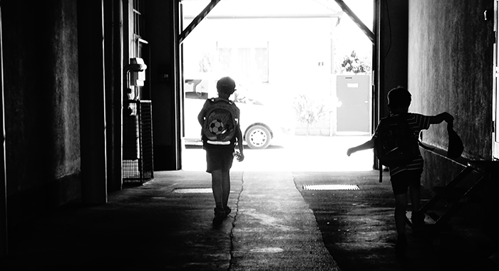
Coping with anxiety
Anxiety and anxiety disorders are on the rise among students in Australia.
The Student Wellbeing Hub recently hosted two webinars that sought to confront these issues among both primary and secondary school students. Presenters Dr Lyn O’Grady, a community psychologist, and Sam Wright, Vice Principal at Padua College, spoke about their experiences working with students who had struggled with anxiety and gave tips on how to address these concerns.

Understanding anxiety
Many people experience anxiety in stressful periods, however not everyone experiences an anxiety disorder. To understand the difference, it is first important to understand what anxiety is at a basic level.
Dr O’Grady explains that ‘Anxiousness occurs due to an expectation that some dangerous or negative event is about to occur.’
She points out that anxiety is a normal emotion to experience and, in many circumstances, helps to keep us safe. However, when anxieties prevent us from carrying out our normal routines, then an underlying anxiety disorder may be present.
‘When your worries are persistent or out of proportion to the reality of the threat and get in the way of living your life, you might have an anxiety disorder.’
Anxiety at the primary school level
Anxiety manifests itself in students differently, depending on the personal circumstances of each student, as pointed out by Dr O’Grady.
‘Some children will be more predisposed than others to have individual personality or genetic factors that might come into play in terms of their vulnerabilities and being more likely to be anxious.’
However, there are some common trends among age groups. Children at the primary school level tend to worry about the things that immediately surround them, such as family, friends and school. Some common concerns among this age group are worrying about schoolwork, worrying about having enough friends, feeling lonely and missing parents, particularly if they live in separate households.
While primary-school-aged children don’t tend to develop anxieties around world events, such as the COVID-19 pandemic, they do pick up on adults’ fears surrounding these issues and are more aware of them than adults may realise. This is why it’s important to talk about global events and guide children through these difficult periods.


Anxiety at the secondary school level
Much like primary level students, secondary school students experience anxieties surrounding friends, family and schoolwork. However, these year levels tend to experience more fears concerning the future. Much of this is personal, such as concerning their academic and career achievements, however some anxieties are socio-political.
A 2021 Mission Australia Youth Survey showed that the most important issues that young people worried about were COVID-19, equity and discrimination, and the environment.
Some teenage students are experiencing difficulties re-integrating after the COVID-19 lockdowns. Dr O’Grady says that she has seen an increase in cases of agoraphobia (fear of places or situations that may cause panic) as well as other social anxiety disorders and phobias.
Strategies to help students cope with anxiety
It’s important to create an environment of trust where students can come forward with their concerns and not feel dismissed. Empathise with and validate their concerns so they feel as though they’re being taken seriously and then gently help them distinguish between fact and fiction. Try not to use language like ‘everything will be fine’ and ‘just calm down’ as it communicates that their concerns are not being taken seriously.
Dr O’Grady points out that adults can, at times, not be good at listening to children and seeing their concerns as real. It’s important to consider that a child’s anxiety may stem from actual experiences, like bullying, that need to be addressed. In particular, if a student reports experiencing physical symptoms like headaches or stomach aches, this should be taken seriously.
Try to ascertain what events or experiences may coincide with bouts of anxiety to determine what is causing the onset. Once you understand what’s contributing to the anxiety, you can help the student develop strategies to cope in those circumstances. For example, if a child gets anxious when being dropped off at school, reassure of them of their schedule, and encourage them to plan how they will manage their day and seek support if necessary to help them feel more confident.
Teaching children mental health literacy gives them the tools and vocabulary to reach out when they begin to experience negative mental health effects. It allows them to understand their experiences and builds a foundation for them to cope effectively when they experience difficulties.
Children are more aware than you may think of the mental health of the adults around them. Taking care of yourself is the first step towards helping you to help them. Modelling good mental health practices is one of the simplest ways for you to teach children and teenagers those same principles. To develop your knowledge or access support, explore the Student Wellbeing Hub for resources and courses, including a free online course on principal and teacher wellbeing to help you look after your own wellbeing.
